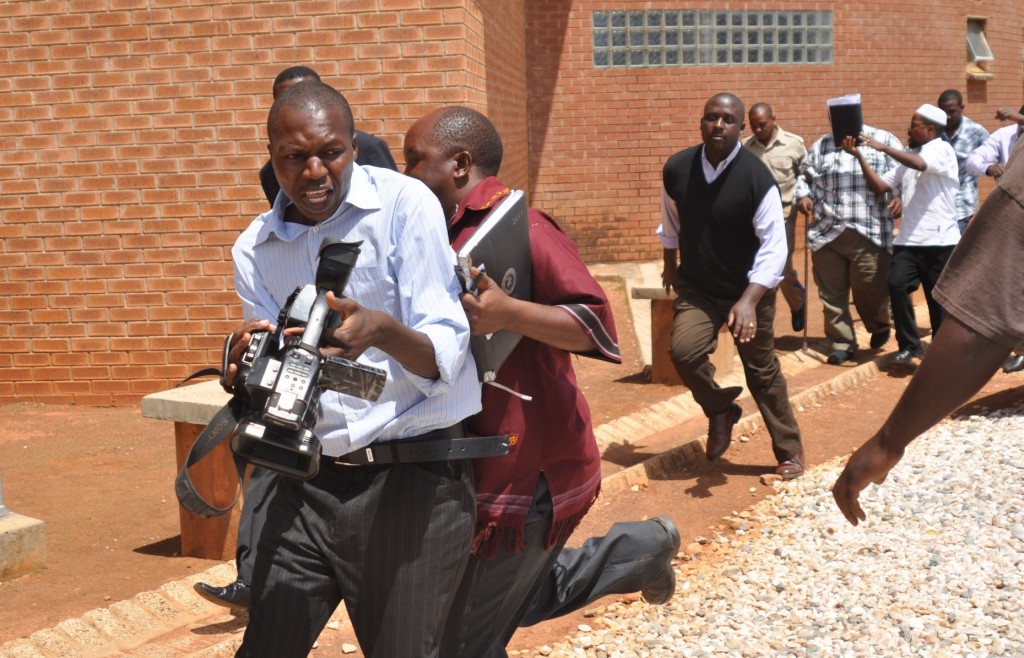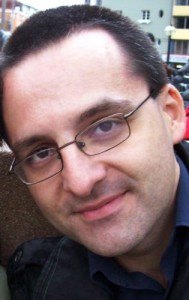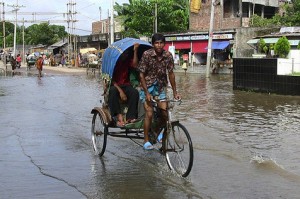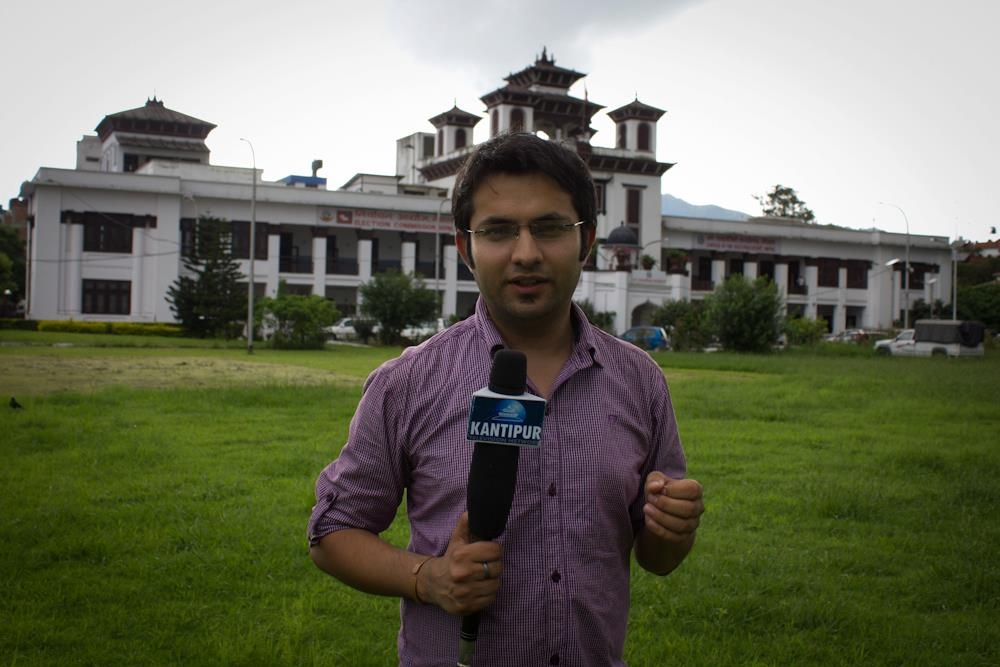How ARD, BBC and CNN verify social media content
 Be it the death of Osama bin Laden, the emergency landing of a plane on the Hudson River or armed conflict in Syria, photos and videos made by eye witnesses usually reach the public as initial evidence through breaking news. Today, media organizations are virtually flooded with digital content from all over the world which makes it even more important to pay attention to the sources of information. That is why large media organizations have set up special research teams to verify the content from social networks. Although most of them follow the same rules, it is worthwhile to compare the separate approaches. Konrad Weber shows how renowned international media outlets such as ARD, BBC, CNN and others check the content coming from social media.
Be it the death of Osama bin Laden, the emergency landing of a plane on the Hudson River or armed conflict in Syria, photos and videos made by eye witnesses usually reach the public as initial evidence through breaking news. Today, media organizations are virtually flooded with digital content from all over the world which makes it even more important to pay attention to the sources of information. That is why large media organizations have set up special research teams to verify the content from social networks. Although most of them follow the same rules, it is worthwhile to compare the separate approaches. Konrad Weber shows how renowned international media outlets such as ARD, BBC, CNN and others check the content coming from social media.
![]() read more
read more
Reporting on natural disasters
By Riazul Islam
Natural disasters like cyclones and floods are a regular phenomenon in my native country Bangladesh.
As a result, the media there frequently reports on natural disasters. But working on these types of stories requires a special approach, two journalists working in the Bangladeshi capital Dhaka told me.
Mustafizur Rahman is a journalist from New Age, a daily English newspaper published in Dhaka. Iftekhar Mahmud works for Prothom Alo, the leading Bengali newspaper in Bangladesh. They shared their experiences and opinions on what preparations journalists should take before and while covering a natural disaster. Mustafizur and Iftekhar say a reporter faces many challenges when going to cover an area hit by a natural disaster. Before departing to the region, a journalist should of course be sure to check his equipment. But there are other key issues to remember when writing a report on the affected area and its people.
![]() read more
read more
Silicon Valley? The wrong place to look for innovation!
 He uses the approach which others only study theoretically and call a future model of journalism. The Frenchman Francis Pisani is an entrepreneurial journalist. He prepared for his new self-funded journalistic project for eight months: a trip around the world in search of those places where the innovative ideas of the future come into being. Pisani lived in Silicon Valley for more than 15 years reporting on new technologies. However, the 69-year-old journalist is sure that innovations of the future will come from other places throughout the world. Since September 2011, he has visited more than 30 cities on five continents, from Mexico City to Recife, Brazil, from Accra and Nairobi to Cape Town in Africa, from Cairo to Beirut and Tel Aviv. He has been in Russia, India and Indonesia.
He uses the approach which others only study theoretically and call a future model of journalism. The Frenchman Francis Pisani is an entrepreneurial journalist. He prepared for his new self-funded journalistic project for eight months: a trip around the world in search of those places where the innovative ideas of the future come into being. Pisani lived in Silicon Valley for more than 15 years reporting on new technologies. However, the 69-year-old journalist is sure that innovations of the future will come from other places throughout the world. Since September 2011, he has visited more than 30 cities on five continents, from Mexico City to Recife, Brazil, from Accra and Nairobi to Cape Town in Africa, from Cairo to Beirut and Tel Aviv. He has been in Russia, India and Indonesia.
![]() read more
read more
Journalists@Work: Rajneesh Bhandari
In the first of our Journalists@Work series, we talked to Rajneesh Bhandari, a multimedia journalist in Kathmandu, Nepal. Rajneesh participated in DW Akademie’s television reporting training held in Kathmandu in 2009 in cooperation with the Television Journalist Association of Nepal (TVJ). Rajneesh, who works at Kantipur Television, gives us some insight into his everyday life as a journalist in Nepal.
![]() read more
read more
Sound sharing for journalists (Part 1) – SoundCloud
 Earlier this year the Berlin-based sound sharing service SoundCloud announced it had hit 10 million users worldwide – since then users have risen to 13 million. At the same time, more and more media organisations are using the site to host and distribute their news. So, how good is it really and what do you need to know?
Earlier this year the Berlin-based sound sharing service SoundCloud announced it had hit 10 million users worldwide – since then users have risen to 13 million. At the same time, more and more media organisations are using the site to host and distribute their news. So, how good is it really and what do you need to know?
![]() read more
read more
Mali : Liberté de la presse ménacée
Le Mali est passé pendant longtemps pour un modèle de démocratie et de liberté de la presse en Afrique de l’Ouest. Les populations avaient à leur disposition près de 40 journaux et plus de 150 stations de radio comme sources d’information. Mais depuis le coup d’Etat en mars dernier et l’occupation du Nord par les islamistes, les entraves à la liberté d’information sont fréquentes aussi bien au sud qu’au Nord du pays.
![]() read more
read more
Six Indian fellows bound for Germany
DW Akademie together with Germany’s Robert Bosch Stiftung has wrapped up the selection process for its Meeting and Exchange Project for Indian Journalists . Almost 150 journalists from all across India applied for this project.

Applications are under review by project manager Patrick Benning (left) and head of DW-AKADEMIE's Asia division Dr. Andrea Rübenacker
The call for applications to the fellowship was launched online. The reaction to it by far exceeded all expectations. “We were extremely impressed by the high number of talented and qualified journalists applying,” says project manager Sabina Casagrande who spent two weeks evaluating the applications together with her colleague Patrick Benning. Both project managers admit they would have loved to invite more journalists to participate. “It was heartbreaking to have to reject so many promising candidates,” they say. However, six fellows between the ages of 25 – 35 will be heading to Germany in September for one-and-a-half months of journalistic and intercultural training. They will also be putting together a multimedia project on the topic of sustainability. Here’s a quick peek at the participants:
![]() read more
read more
How to correct shifting lines in photographs
If you take photographs, you’ve probably encountered this situation: You’re trying to photograph a building or a group of buildings, but you can’t move back any further. So in order to get the whole structure into the picture, you use a wide angle. In the resulting frame, the houses look like they’re about to fall over. This phenomenon is caused by a distortion of perspective brought about by the wide angle lens, the so-called shifting or converging lines. In many cases, a free software called ShiftN can help. It automatically corrects shifting vertical lines and turns them into straight verticals.
The video below shows you what this software can do.
This is how the programmers describe this free software: “ShiftN permits correction of converging lines; a majority of the correction work is taken over automatically by the program. Using the ‘automatic correction’ item in the menu is in most cases sufficient to produce a satisfying result. Both the effects of converging lines and poor camera angle are corrected automatically.”
It works, but it doesn’t work wonders
If you use ShiftN to correct converging lines, be careful not to overdo it.  Seeing only straight verticals instead of shifting lines doesn’t look natural. Your photos will seem awkward and unnatural.
Seeing only straight verticals instead of shifting lines doesn’t look natural. Your photos will seem awkward and unnatural.
ShiftN is great if the distortion is only minor, as seen in the example video. But a case like those white high rises you see at the top of this page is too much for ShiftN’s automatic correction.
As you see on the right, the way ShiftN “corrected” this picture looks artificial. The manipulation is obvious and makes the viewer uncomfortable.
In some cases, you’ve just got to take another step back to get the perfect picture – or be prepared to live with converging lines.
By Thorsten Karg
Journalists@Work: Mabvuto Phiri
In this installment of our Journalists@Work series we meet Mabvuto Phiri, an editor at MUVI TV in Lusaka, Zambia. Mabvuto has been working at MUVI since it started broadcasting and was recently selected to take part in the DW Akademie program, East4South.
Deutsche Welle’s André Leslie spoke to him about everyday life as a journalist in Zambia and a recent court case concerning people who physically attacked him for reporting on a sensitive issue. 
![]() read more
read more
Data Visualisation and Information Graphics: “Functional like a hammer”
 The visualisation of information is one of the hot topics on the internet at the moment. These days there are more and more tools available which allow anyone to produce information graphics. The graphics that people are sending around via social network sites are often colourful, with big letters and fun icons – but they normally don’t convey much information.
The visualisation of information is one of the hot topics on the internet at the moment. These days there are more and more tools available which allow anyone to produce information graphics. The graphics that people are sending around via social network sites are often colourful, with big letters and fun icons – but they normally don’t convey much information.
So, what do good information graphics and data visualisations have in common?
Alberto Cairo has been interested in this issue for more than 15 years. He’s a big name in the international scene of graphic designers involved in information communication. In September his book “The Functional Art – an introduction to Information Graphics and Visualization“ is due to hit stores. As part of the project, Cairo interviewed a number of big names from the industry and he explains in detail the important aspects of professional information graphics.
“They should be functional like hammers, multi-layered as onions, and beautiful and true as equations or efficient scientific theories,” he says. In a number of chapters of his book he describes the basics of perception and cognitive psychology, which every graphic designer and journalist should know.
![]() read more
read more











Feedback